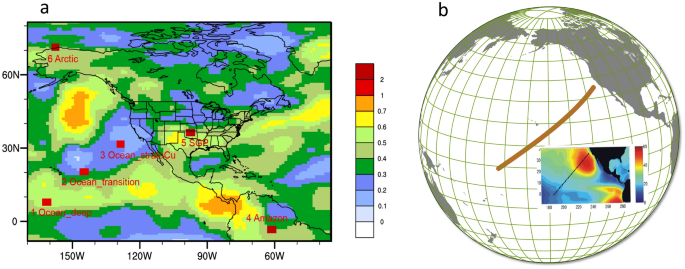2024-03-13 パシフィック・ノースウェスト国立研究所(PNNL)
<関連情報>
- https://www.pnnl.gov/publications/region-and-cloud-regime-dependence-parametric-sensitivity-e3sm-atmosphere
- https://link.springer.com/article/10.1007/s00382-023-06977-3
E3SM大気モデルにおけるパラメトリック感度の領域・雲域依存性 Region and cloud regime dependence of parametric sensitivity in E3SM atmosphere model
Yun Qian,Zhun Guo,Vincent E. Larson,L. Ruby Leung,Wuyin Lin,Po-Lun Ma,Hui Wan,Hailong Wang,Heng Xiao,Shaocheng Xie,Ben Yang,Kai Zhang,Shixuan Zhang & Yuying Zhang
Climate Dynamics Published:18 October 2023
DOI:https://doi.org/10.1007/s00382-023-06977-3

Abstract
The Department of Energy (DOE)’s Energy Exascale Earth System Model (E3SM), including its atmosphere model (EAM), has many relatively new features. In a previous study we conducted a systematic parametric sensitivity analysis for EAM based on short, perturbed parameter ensemble (PPE) simulations, mainly focusing on global mean climate features and metrics. While parameter values in global climate models are generally invariant in space and time, model response to parameters perturbation may vary by regions and climate regimes, which motivates the need to better understand the EAM model behaviors and physics at regional scale and process level. In this study, using the same set of PPE simulations and a similar sensitivity analysis framework, we identify parameters that cause largest sensitivities over different regions and compare model responses in fast atmospheric processes to the parameters across different cloud regimes for several important cloud-related fidelity metrics. We find that cloud forcing has opposite response to some parameters over mid-latitude vs. tropical land. We also analyze how the parametric sensitivity varies as stratocumulus transitions to shallow convection and to deep convection over ocean. Low cloud forcing and shortwave cloud forcing in the subtropical eastern Pacific are most sensitive to the parameters controlling the width of the probability density function (PDF) of the subgrid vertical velocity (w’) (gamma) and the damping of the w’ skewness (c8) near the coast but become more sensitive to the parameter affecting the damping of the w’ variance (c1) further offshore. Detailed interpretation of the spatial dependence of parametric sensitivity is provided. We also investigate how the parametric sensitivity evolves with prediction duration. This study improves our process-level understanding of cloud physics and parameterization and provides insights for developing more advanced regime-aware parameterization schemes in global climate model.



